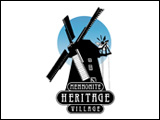Scientist are looking at the possibility of using diet to reduce the potential for leg problems in sows without negatively impacting milk production.
Research being conducted on behalf of Swine Innovation Porc exploring the value of manipulating the diets of gilts to reduce their susceptibility to leg problems while maintaining mammary development will be on the agenda as part of Saskatchewan Pork Industry Symposium 2019 underway today and tomorrow in Saskatoon.
Dr. Chantal Farmer, a Research Scientist in Sow Lactation with Agriculture and Agri-Food Canada in Sherbrooke, has been examining the effect of feed restriction prior to puberty and including fibre into the diet.
Before puberty I’ve been looking at the effect of feed restriction, which I know is not good, so you don’t want to restrict feed intake from 90 days of age to puberty but I’m doing studies looking at feed restriction but to a smaller extent and also using fibre. Normally a producer will not use feed restriction for a growing gilt. They will feed them maximum but now we have gilts that grow very fast because they are selected for great growth rates just as if they were going to market but we want to keep them in the herd for a long time and they often have leg problems.
Some producers are trying to do a little bit of feed restriction in the growing finishing period to decrease that growth rate and try to have less leg problems. Now I’m doing a study where, instead of looking at a 20 percent feed restriction, I’m looking at a 10 percent feed restriction to know if that could be a possibility to use to make sure our gilts do not grow too fast and I’m also looking at the addition of fibre in the diet. If you can dilute the diet with fibre, would that slow down the growth rate a little but also maintain mammary development?
~ Dr. Chantal Farmer, Agriculture and Agri-Food Canada
Dr. Farmer notes she is also examining the effectiveness of providing plant based estrogens to the growing gilt and the hormone Prolactin to stimulate mammary development.



